Often called the commercial capital of Vietnam, the chaotic and dynamic city of Ho Chi Minh is the country’s largest. But there is no need to feel overwhelmed, as our Ho Chi Minh City travel guide will help you navigate this bustling metropolis.
Plan your trip to Ho Chi Minh City
Visiting Ho Chi Minh: What to Expect
Ho Chi Minh City, still called Saigon by many locals, is a city with big energy that never seems to stop moving. I decided to spend two weeks in this electrifying city at the end of my 3 months in Vietnam.
Navigating the intense streets of Ho Chi Minh City feels overwhelming at first, even to an experienced traveler like me. The relentless flow of motorbikes adhering to traffic rules known only to the locals gets your heart pumping. And just when you think you’ve seen it all, they’re zooming past on the sidewalk, and you’re using your cat-like reflexes to spring out of their way.
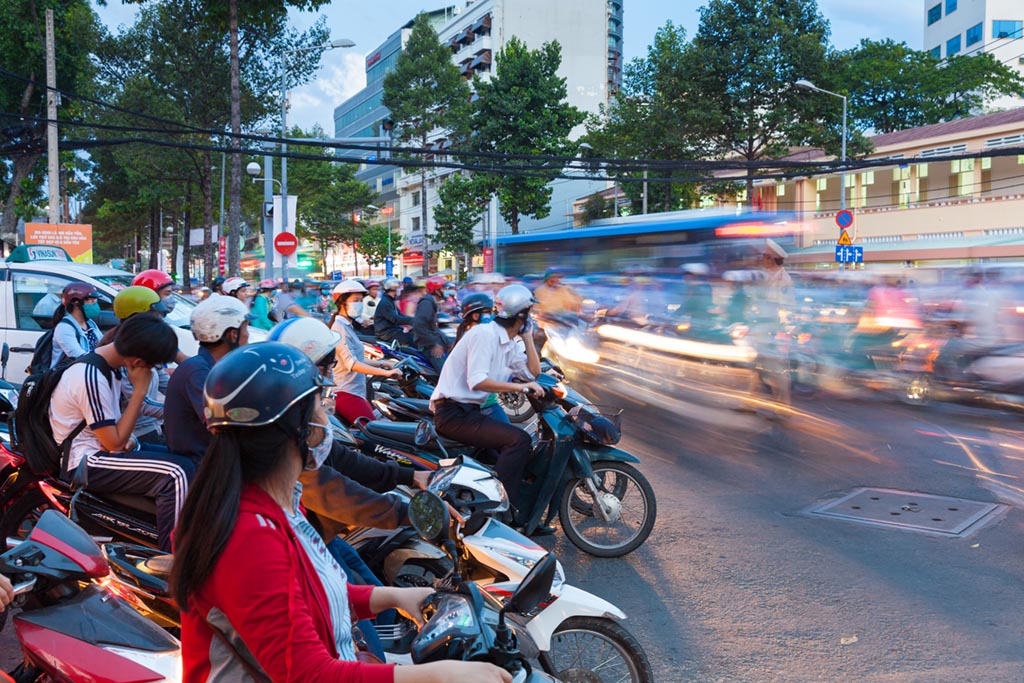
The cityscape is an interesting blend of old and new, traditional and modern. It’s a stark contrast to Hanoi, which is more traditional and laid-back. But while Hanoi may be known for its historical sites and cultural attractions, Ho Chi Minh City has its own hidden gems.
Some things to know:
- One of my favorite things about Ho Chi Minh City is exploring its food scene. From street carts selling traditional pho to fancy rooftop restaurants, there’s something for every taste bud.
- The truth is most visitors confine themselves to District 1 — one among its 24 bustling districts. And while there’s plenty to explore within this urban heart, venturing beyond District 1 is where the magic really begins.
- Most travel guides will point you toward the Notre Dame Cathedral and Independence Palace, but these popular landmarks, while impressive, barely scratch the surface. It’s the local experiences, the vibrant street food scene, hidden alleyways, and pulsating nightlife that make this city so unique.
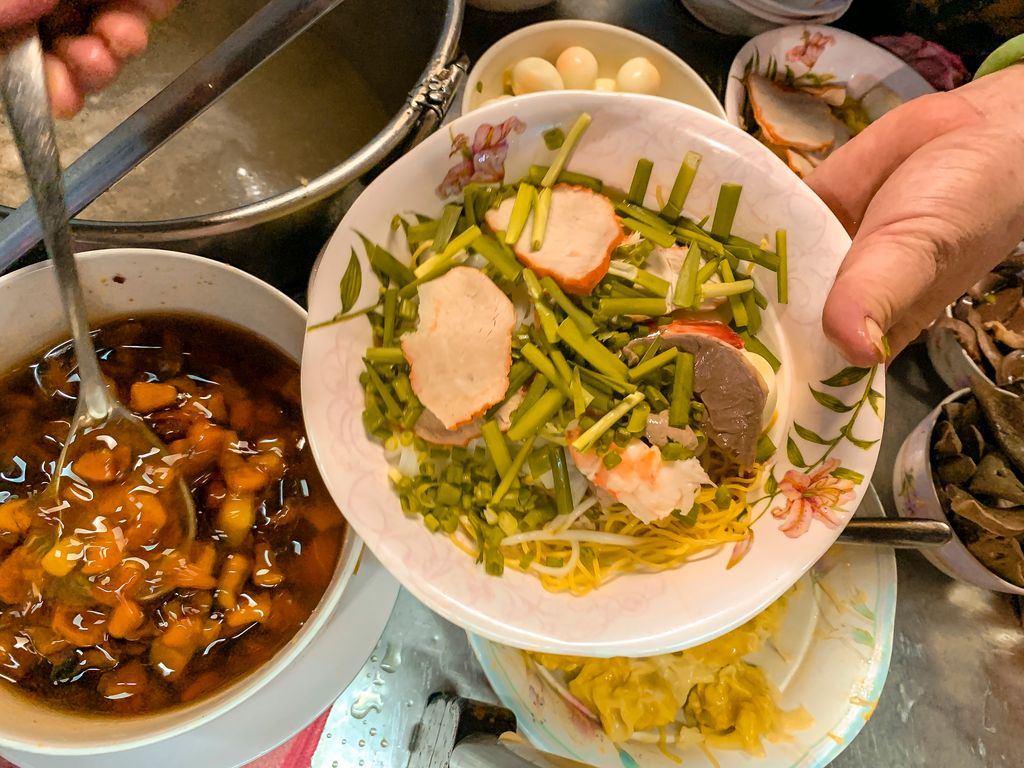
Things to Do in Ho Chi Minh City
So, where do you start in such a buzzing place? Let’s dive into the top things to see and do in Ho Chi Minh City.
Instead of listing sights one by one, we’ll cover several types of exploration:
Immerse Yourself in Local Vibes
To truly immerse yourself in the local atmosphere and vibes of Ho Chi Minh City, start your adventure by wandering around its vibrant streets.
Let the city’s rhythm guide you as you explore lush urban parks like Tao Dan Park (map pin), known for its early morning exercise culture and bird cafe. You won’t see many tourists here, just locals going about their daily routine. Feel free to jump in on an exercise class!
Don’t miss Nguyen Van Binh Book Street (map pin), a tranquil haven for book lovers tucked away from the bustling traffic. Here, you can browse countless book stalls or enjoy people-watching from a cozy corner.
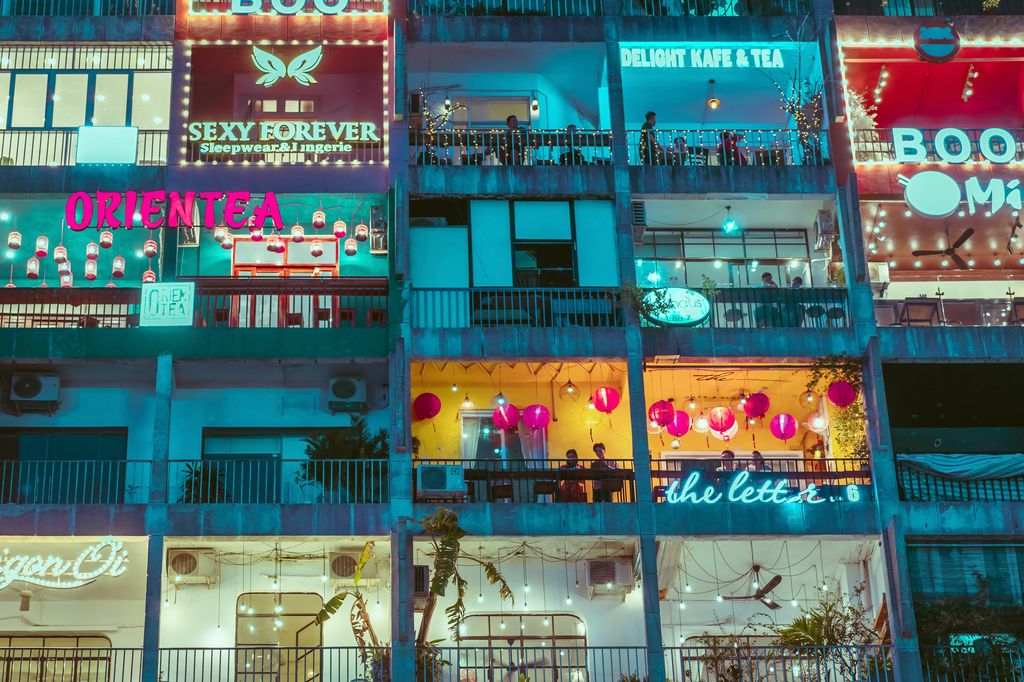
Next, head towards the historic Cafe Apartments (map pin) — an unassuming building on Saigon’s famous shopping street, Dong Khoi. Inside this labyrinthine structure, which used to house military and government workers, are numerous indie coffee shops and fashion boutiques stacked above one another. Climb the stairs to each of the 9 stories or pay the elevator fee of 3,000 VND ($0.13 USD). Grab a strong Vietnamese coffee while enjoying panoramic views of the city’s skyline.
Finally, make your way to the Central Post Office (map pin) — not just to marvel at its French colonial architecture but also to send a postcard home. Don’t be surprised if it takes a while to arrive in the mailbox.
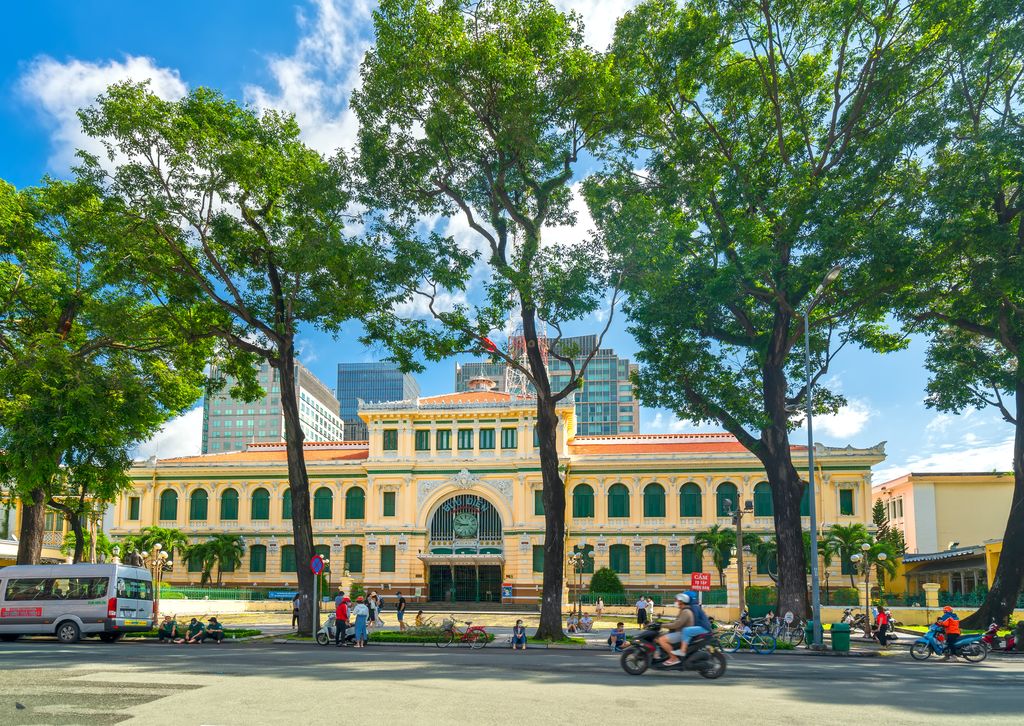
Learn About the US-Vietnam War
After exploring the vibrant cityscape, let’s step into pages of history and witness first-hand how this resilient nation rose from adversity.
The War Remnants Museum, filled with haunting exhibits, uncovers the harsh realities of the US-Vietnam War (most of which I never learned about in school). Although a sobering experience, it’s crucial to understanding Vietnam’s tumultuous history. I bought the audio guide, but there’s plenty of information posted throughout the exhibits, so it’s not required. Allow a couple of hours to read everything.
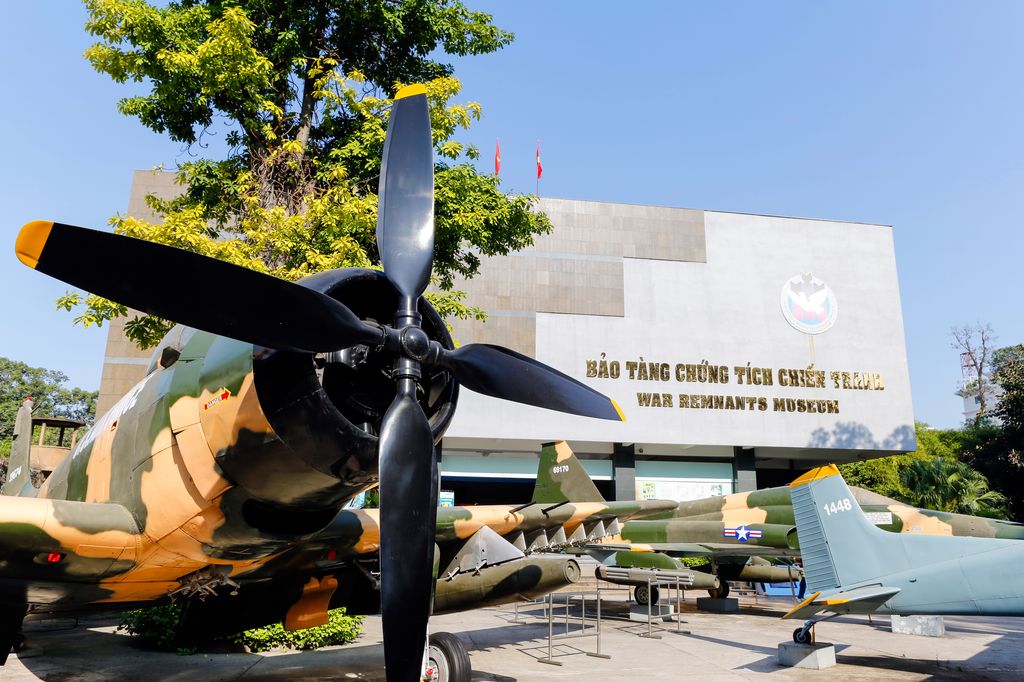
Just under 2 hours (by car) from Ho Chi Minh lies another testament to resilience – the Cu Chi Tunnels. This intricate network of underground tunnels used by Viet Cong soldiers paints a vivid picture of their living conditions during wartime. To truly appreciate these sites’ historical importance, book a guided tour that explains their significance.
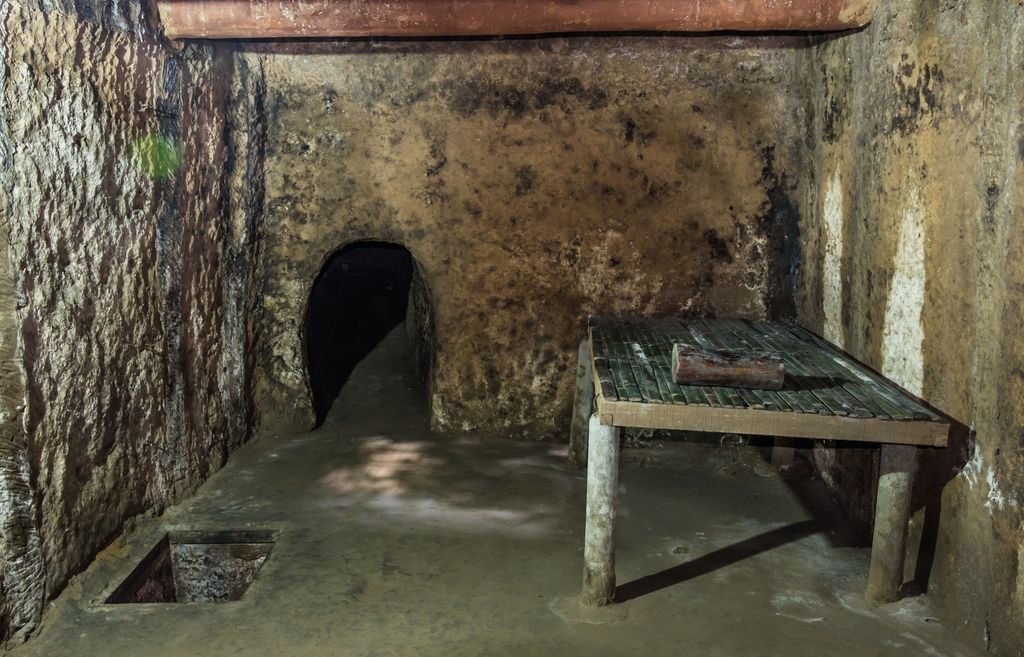
I took this half-day tour of the Cu Chi Tunnels, which included pick-up and drop-off at my accommodation. My guide was excellent – I learned so much!
Street Food, Street Food, Street Food!
Ho Chi Minh City is famous for its street food, and a visit that doesn’t include sampling some of the delicious street food dishes is a wasted trip. Plus, eating like the locals do is one of the main reasons why Vietnam is so affordable.
Before arriving in Vietnam, I wasn’t too familiar with Vietnamese food outside of spring rolls and pho, so I took not just one but two food tours while I was there! Now I’m obsessed.
Start with famous dishes like banh mi (easily found on every other corner), the quintessential Vietnamese sandwich that perfectly balances crunchy baguettes with tangy pickles, rich pate, and succulent meats – but don’t stop at what’s familiar.
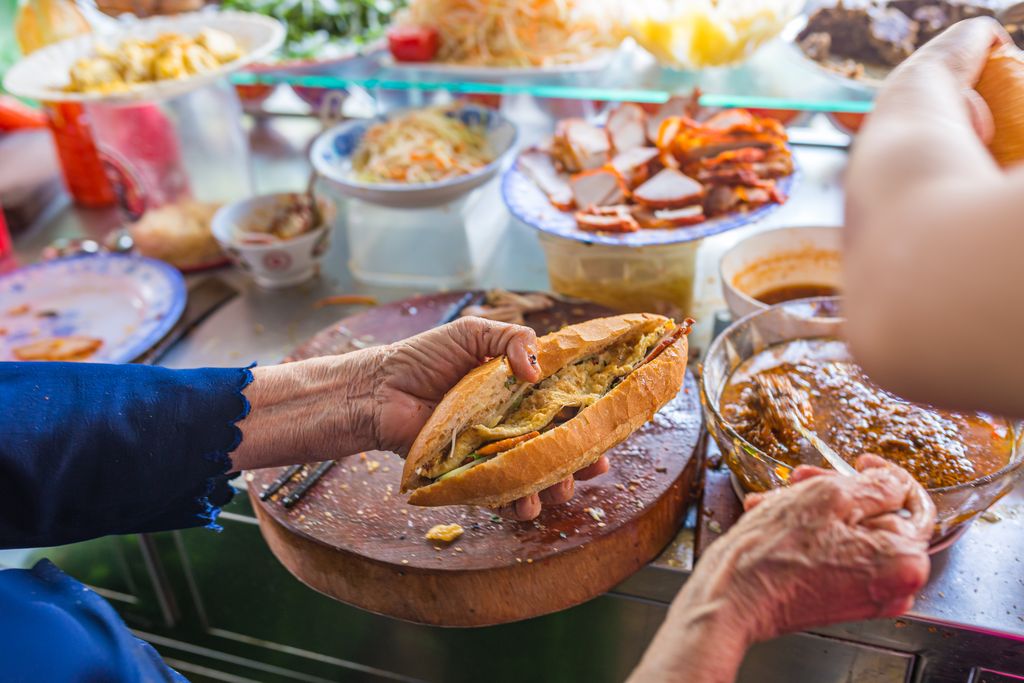
Com Ga, or chicken rice, is a tried and true fan favorite for more poultry-oriented palates. The savory chicken combined with fragrant rice creates a simple yet satisfying dish that perfectly embodies Vietnam’s homely cuisine. My favorite was at Cơm Gà Xối Mỡ.
But no gastronomic journey in Ho Chi Minh City would be complete without indulging in the fresh seafood readily available at local markets — from juicy prawns to tender squid, it’s a seafood lover’s paradise! Ong Cua is popular for freshly caught seafood and ice-cold beer, and Oc Oanh for the crab claws and scallops. If you’re feeling extra adventurous, try the snails at Mrs. Truoc’s Snail Stall, which was featured in a Netflix show a couple of years back.
Get your caffeine fix with a cup of Vietnamese coffee. It’s thick, robust, and served over condensed milk, creating a balance of sweetness and bitterness (it’s a little too sweet for me, but you must try it at least once!). Saigon is famous for its cafe culture, and there’s no shortage of cafes hidden down narrow alleyways. Or, caffeinate like the locals, sipping coffee from tiny plastic stools on the sidewalk while you people-watch.

Food tours are a great way to get to know a new place. Unfamiliar food becomes less intimidating, and the local guides give great insider tips. They’re especially fun to do as a solo traveler — there’s no better way to make friends than by sharing delicious bites and clinking beers while screaming “một hai ba, dô!” (that’s Vietnamese for 1, 2, 3, DRINK!).
Skyline Views and Local Nightlife
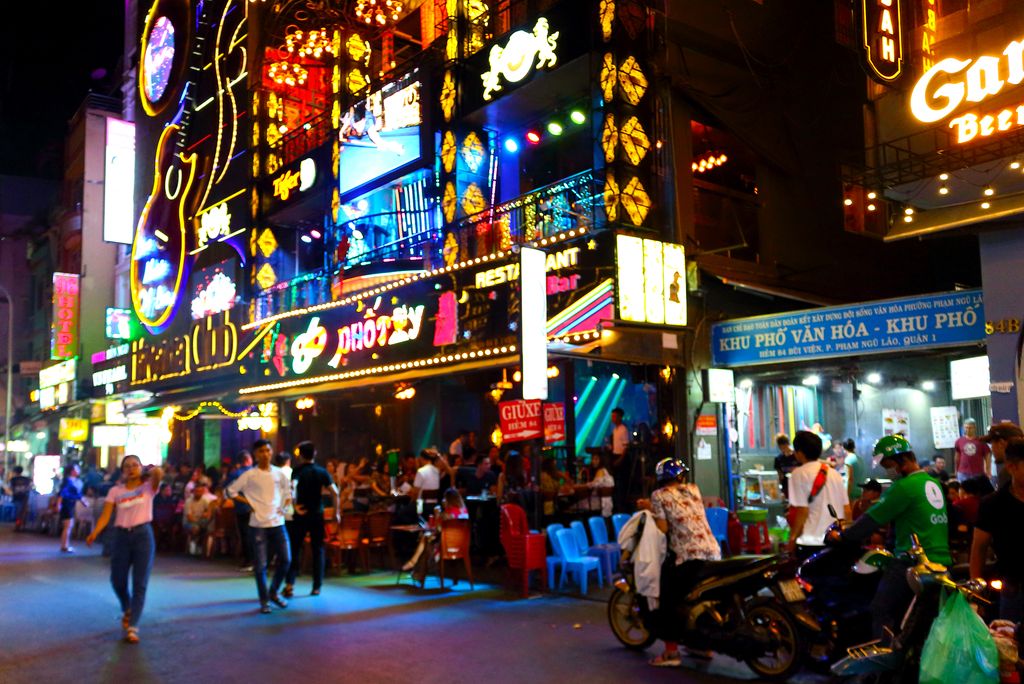
It’s not just delicious street food that you’ll find in Saigon — the skyline of Ho Chi Minh City beautifully combines old and new, modern skyscrapers with historical landmarks.
The Thu Thiem Bridge is an ideal spot for photographers eager to capture the cityscape at sunset. Vinhomes Central Park (map pin) is another haven where the skyline majestically unfolds around you.
However, if you crave panoramic vistas from dizzying heights, then Bitexco Financial Tower (map pin) should top your list as one of the best things to do in Ho Chi Minh at night. The Eon Heli Bar on its 52nd floor offers a free visit, live music, cocktails, and a full circle view of the city – though some argue that it’s so high up that it takes away from the magic!
For those who enjoy their views with a side of vibrant nightlife, Air 360 Lounge hosts parties in an upscale setting, albeit at a premium price.
If you’re after something more laid-back, head to The View Rooftop Bar. Perched above bustling Bui Vien Street, this casual joint captures the spirit of Saigon – best enjoyed with a cool drink as the city lights twinkle below. Speaking of Bui Vien Street, this infamous backpacker area is a must-visit for those looking to experience the lively, bohemian side of Ho Chi Minh City.
See Saigon’s Historical Sites
Saigon is a bustling metropolis rich in history, having gone through French colonialism and the Vietnam War. As a result, there are numerous historical sites to visit that offer a glimpse into its past.
The best way to explore the city’s notable landmarks — especially if you’re short on time — is on the back of a motorbike. This highly-rated motorbike tour takes you to the heart of the city, revealing its rich past and vibrant present in just half a day.
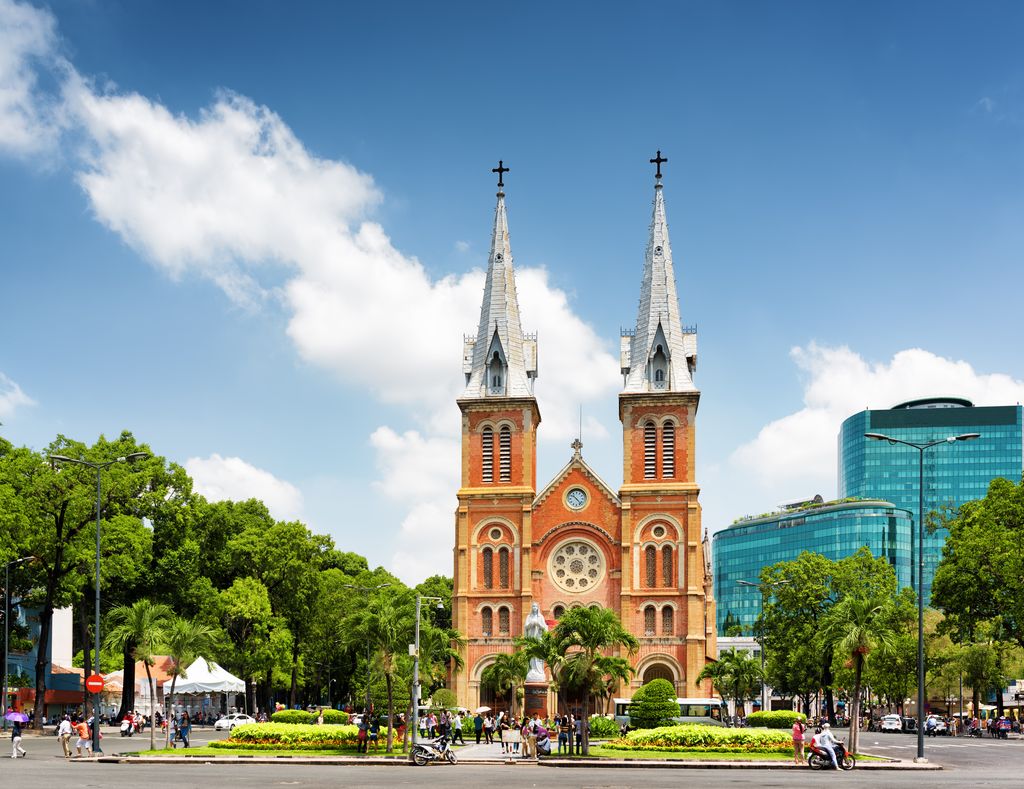
Your journey includes the elegant Notre Dame Cathedral and majestic Post Office, boasting gorgeous architecture that hints at Vietnam’s French colonial legacy. From there, set off towards the buzzing Walking Street and Cafe Apartments. The stunning Opera House and radiant City Hall are next on your itinerary.
Continue to Thich Quang Duc Monument, where history stands still in the memory of the monk who self-immolated for peace during the Vietnam War.
Venture further into local life with a visit to a bustling wet market before immersing yourself in Chinatown’s vibrant chaos. You’ll also explore the Nguyen Thien Thuat apartment complex – an embodiment of Saigon’s everyday life beyond tourist hubs.
If being on a motorbike isn’t your speed (see what I did there?), this small-group city tour goes by mini-van, and this private tour is in a U.S. Army Jeep!
Add-On a Visit to the Mekong Delta
Just a 2.5-hour drive from Ho Chi Minh City is the tranquil Mekong Delta, often called Vietnam’s ‘rice bowl.’ A trip here offers a refreshing counterpoint to city life as you experience the verdant beauty of the region’s waterways, lush rice paddies, and fruit-laden orchards.
You’ll also get an intimate glimpse into local life, with opportunities to visit traditional floating markets like Cai Rang and Phong Dien, where trade is still conducted on the water.
I’ll never forget enjoying the beautiful golden glow over the Mekong Delta at sunrise, chowing down on a delicious bao bun bought from one of the river vendors maneuvering her boat from customer to customer at the floating market.
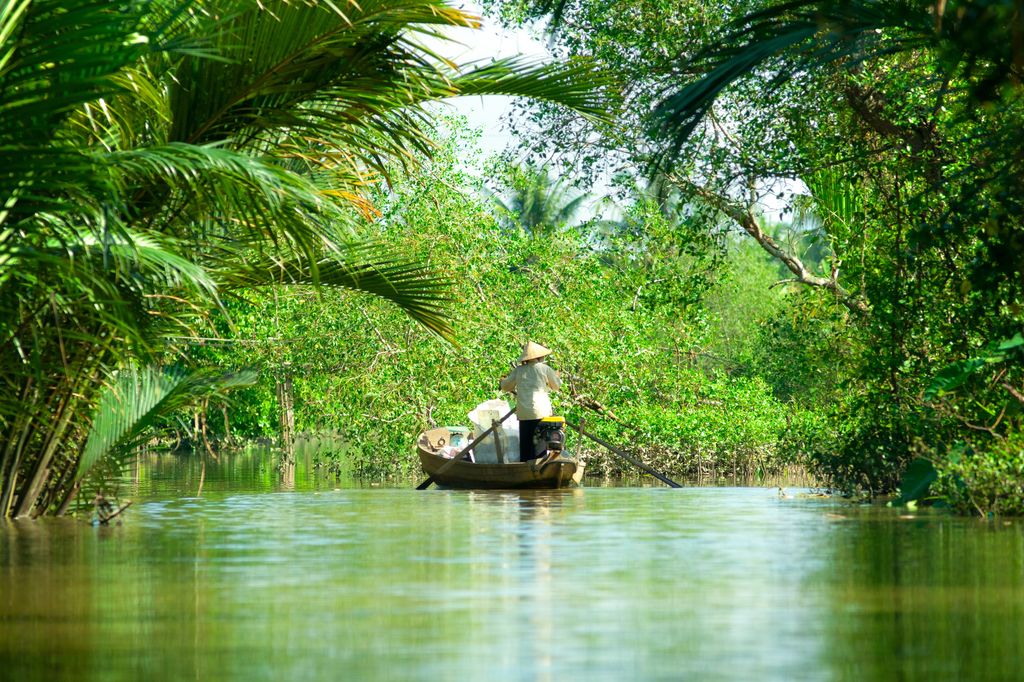
Mekong Delta tours range from day trips to overnight stays. This top-rated tour includes transportation to/from Ho Chi Minh City, a riverboat tour, a visit to a traditional temple, Canal Island, a local home, and a local lunch.
I wanted to spend more time in the Delta, so I booked an overnight stay at Susan Homestay, where we got to have breakfast at the floating market, explore local canals by boat, bike through rice fields around local villages, visit a wet market, and cook a traditional Vietnamese meal.
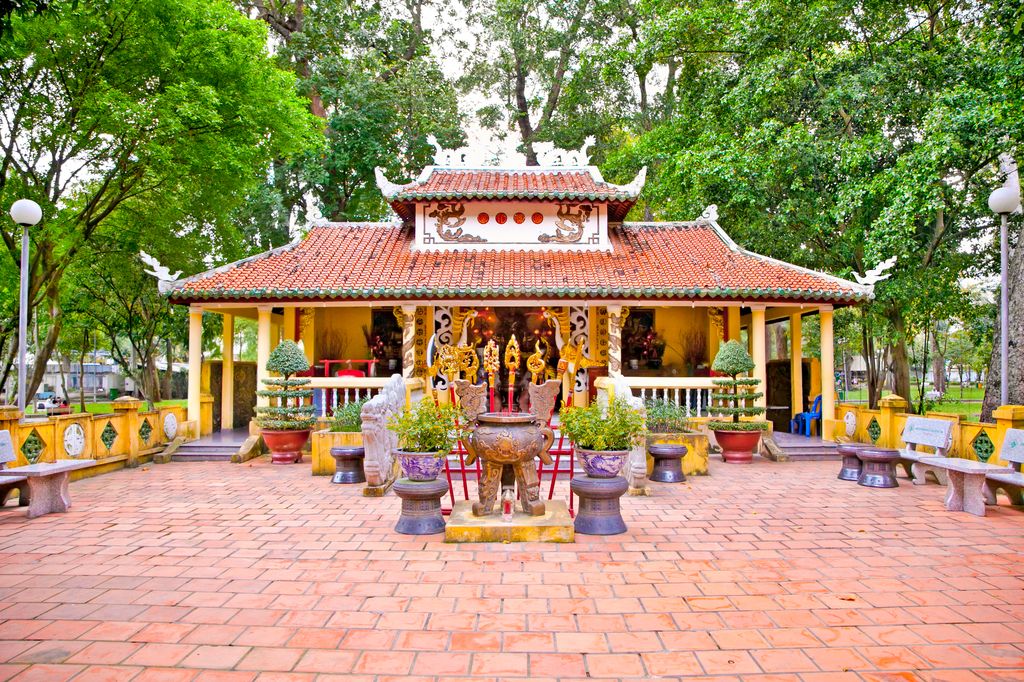
Where to Stay in Ho Chi Minh City
With 24 districts to choose from, where should you stay in Saigon?
Tourists mainly stay in District 1, but you’ll find accommodations spread throughout Districts 1-5.
For first-time visitors, District 1 is a popular choice due to its proximity to the city’s major historical sites, shopping areas, and vibrant nightlife. Known as the city’s financial hub, it houses iconic landmarks such as the Saigon Notre-Dame Basilica, the Central Post Office, and the bustling Ben Thanh Market.
If you’re looking for a more local experience, consider District 3 (that’s where my apartment was). It’s less crowded than District 1 but still offers plenty of attractions like Tao Dan Park and a variety of local eateries.
District 5 is another interesting option, particularly for culture enthusiasts. This area is known as Saigon’s Chinatown (Cholon) and is famed for its unique architectural blend of Chinese and Vietnamese influences.
Don’t spend too much time worrying about which district to stay in, especially if you’re only in Saigon for a couple of days — it’s easy to get around the city.
My Top Ho Chi Minh Hotel Picks
- Saigon Authentic Hostel: The location in District 4 offers an authentic alternative to busy District 1. Enjoy cozy beds, free breakfast, bike rentals, and a rooftop terrace where happy hour is hosted twice a week (the first beer is free!).
- Jan Hostel Central Point: Bed and breakfast-style accommodation in District 1 with private bathrooms and showers. With an on-site bar, this popular choice for solo travelers is made even better by the personable owner Jan, who is always ready to share stellar local recommendations.
- Vy Khanh Guest House: Located in a tranquil corner of a busy area, just a stone’s throw away from the lively Ben Thanh Market and an array of restaurants. Renowned for its kind and helpful hosts, this guest house combines comfort with convenience perfectly.
- Leiden Homestay & Cafe: Located close to the city center in District 1, Leiden offers a clean and cozy atmosphere with private bathrooms for your comfort. It has an on-site coffee shop and bar, and its signature white coffee has gained a delicious reputation among guests.
- Au Lac Charner Hotel: A boutique gem in the heart of District 1, boasting elegant accommodations that echo the charm of French colonial-era tea houses. With a delicious breakfast, a rooftop pool offering city views, and some rooms featuring outdoor showers on the balcony, this central hotel is an oasis of style and comfort.
How to Get Around in Ho Chi Minh City
Navigating Ho Chi Minh City is an adventure in itself – I’ve never seen more motorbikes in my life!
Sure, you could use a taxi to get from A to B, but you could do that anywhere. You’re in Vietnam for crying out loud! Instead, use the Grab app to hail a moto-taxi (a mode of transport I got used to when I was living in Thailand). It’s cheaper, faster, and more exciting.
I don’t recommend renting a motorbike yourself – traffic in Ho Chi Minh City is chaotic and unpredictable. Drivers follow rules that outsiders don’t understand.
Another option is to use the local buses. These can be a bit confusing for tourists, but they’re definitely the cheapest way to get around the city. Just make sure you have a small change on hand to pay your fare. When you see your bus number, wave to the driver and they’ll pull over.
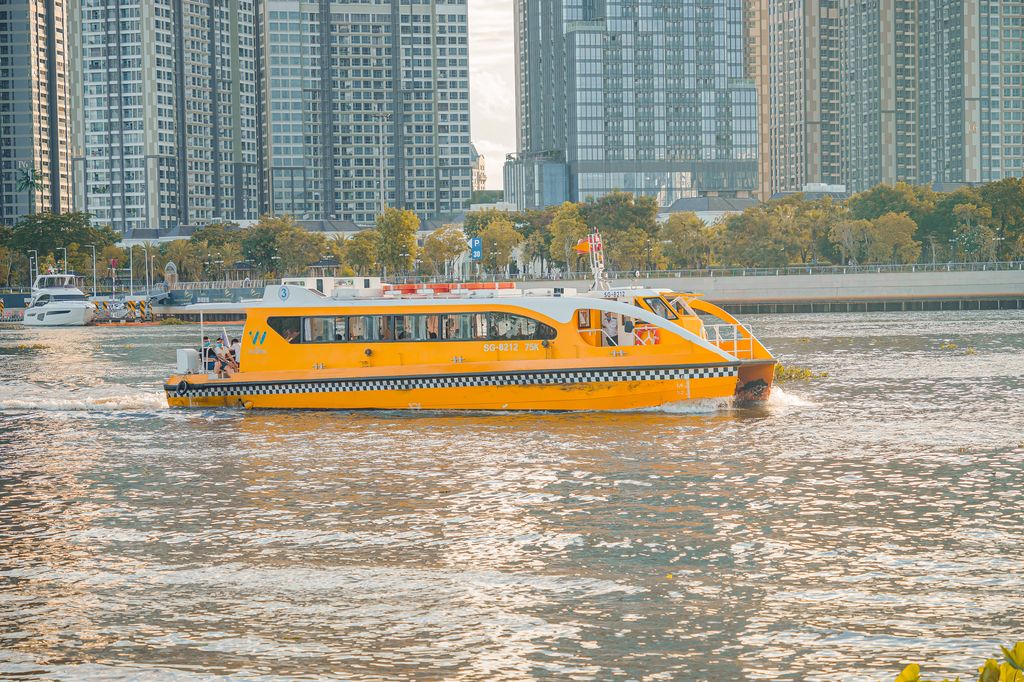
For those seeking a scenic route, try the public Saigon Waterbus. One-way tickets are just 15,000 VND (less than $1 USD) – the full route is about 50 minutes, then there’s a 20-minute break before the boat turns back around. Hop off any time, or do the full route to see more of the city. It’s a slow boat, some say there’s not much to see along the way, but for those who love being on the water (like me!), it’s a nice way to relax a bit.
Some links may be affiliate links, meaning I may earn commission from products or services I recommend. For more, see site policies.






0 comments
Leave a comment
Your email address will not be published. Comments are manually moderated.